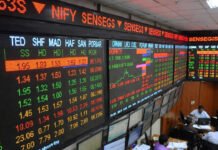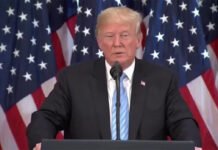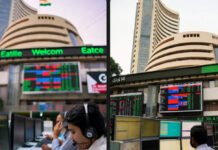Sensex, Nifty Plunge as US Imposes 25% Tariff on India for Russian Oil Imports
The Indian stock market witnessed sharp declines in early trade on Thursday after US President Donald Trump imposed an additional 25% tariff on India for buying Russian oil. This unexpected move rattled investor sentiment, leading to heavy selling pressure across frontline indices and renewed volatility in domestic equities.
Market Opening: Sensex and Nifty in Red
The 30-share BSE Sensex dropped 508.16 points, opening at 80,278.38.
The 50-share NSE Nifty slipped 157.35 points to 24,554.70.
The Indian Rupee opened 16 paise higher at 87.53 per US dollar, showing mild resilience despite pressure on equities.
This fall comes right after the US hiked duties on Indian imports to a total of 50%, a move that investors fear could escalate into a broader trade conflict between New Delhi and Washington.
Who Lost and Who Gained in Early Trade?
Top Losers on Sensex
The tariff announcement hit several blue-chip stocks hard. The biggest losers included:
HCL Technologies
HDFC Bank
Power Grid Corporation
Sun Pharma
NTPC
Bharat Electronics Limited (BEL)
Top Gainers on Sensex
Despite the turmoil, select heavyweight stocks managed to stay in the green:
Eternal
Asian Paints
Titan Company
Maruti Suzuki
Larsen & Toubro (L&T)
This mixed performance shows that consumer-facing and infrastructure stocks remained resilient, while technology and financial counters bore the brunt of selling.
FIIs vs. DIIs: Battle of the Flows
Data from the exchanges highlights contrasting moves by global and domestic investors:
Foreign Institutional Investors (FIIs) sold shares worth ₹6,516.49 crore on Tuesday.
Domestic Institutional Investors (DIIs) countered the sell-off with aggressive buying worth ₹7,060.37 crore.
This indicates that domestic funds are actively supporting the market, helping cushion the fall despite sustained FII outflows triggered by global uncertainties.
Global Market Cues: Mixed Sentiment
Asian Markets
South Korea’s Kospi, Japan’s Nikkei 225, and Shanghai’s SSE Composite were all trading in positive territory.
Hong Kong’s Hang Seng showed weakness, reflecting concerns over China’s slowing economic recovery.
US Markets
Wall Street closed higher on Wednesday, shrugging off trade tensions and buoyed by optimism in the technology sector.
Crude Oil
Brent crude prices fell 0.76% to $67.53 per barrel, providing relief for import-heavy India.
A drop in oil prices could offset some of the negative impact of US tariffs on Indian markets.
Expert Opinion: Tariffs Seen as Short-Term Shock
VK Vijayakumar, Chief Investment Strategist at Geojit Financial Services, believes the panic is temporary:
“The 50% tariff imposed on India will impact market sentiment in the near term, but the market is unlikely to panic. Investors see these high tariffs as a short-term aberration, likely to be resolved through diplomatic talks.”
He further emphasized that aggressive DII buying remains the strongest support base for Indian equities, ensuring that FII-driven sell-offs do not spiral out of control.
Stock Market Recap: Previous Trading Sessions
Tuesday (September 26):
Sensex fell 849.37 points (1.04%) to close at 80,786.54.
Nifty declined 255.70 points (1.02%) to close at 24,712.05.
Wednesday (September 27):
Markets remained closed for Ganesh Chaturthi.
The current dip extends Tuesday’s weakness, showing how global trade tensions are overshadowing domestic fundamentals.
Outlook: What Lies Ahead for Investors?
While the tariff shock has pressured equities in the short term, experts suggest investors should focus on:
Domestic liquidity support from DIIs, mutual funds, and retail investors.
Falling crude oil prices, which can improve India’s macroeconomic outlook.
Corporate earnings growth in Q2, which will be critical to justify current high valuations.
Diplomatic negotiations between India and the US, which could soften the trade standoff.
Conclusion: Tariffs a Temporary Storm, But Valuations Remain a Concern
The Sensex and Nifty’s sharp early losses highlight the immediate shock caused by the US tariff hike, but experts insist this is not a structural threat. Instead, the bigger challenge for Indian equities remains stretched valuations and slowing earnings growth.
For now, DII inflows, stable global oil prices, and resilient domestic consumption are keeping the markets afloat. Investors, however, must prepare for short-term volatility until clarity emerges on trade negotiations between New Delhi and Washington.
















